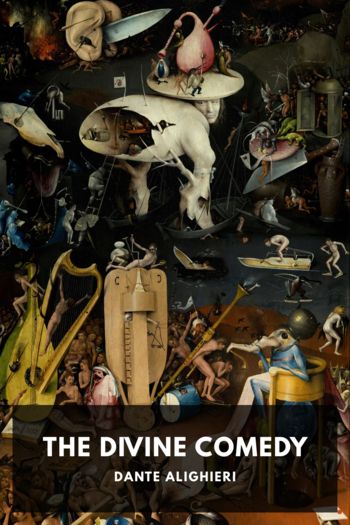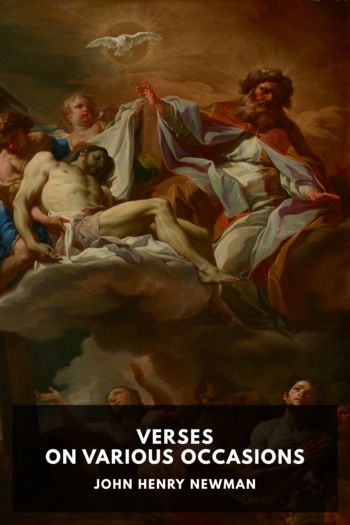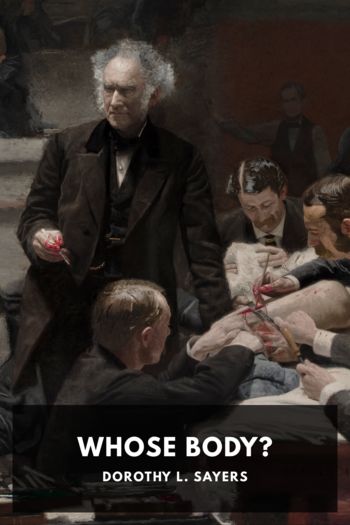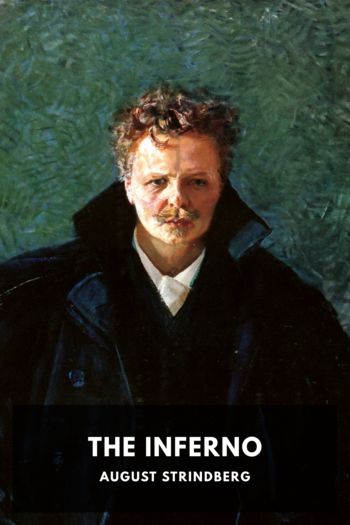The Divine Comedy, Dante Alighieri [best thriller novels of all time TXT] 📗

- Author: Dante Alighieri
Book online «The Divine Comedy, Dante Alighieri [best thriller novels of all time TXT] 📗». Author Dante Alighieri
One last look still takes of the day-god, fast disappearing;
Then, amid rocks rude-piled, umbrageous forests, and copsewoods,
Sees his similitude float, wherever he fixes his vision;
Finding it glancing before him, and dancing in magical colors.”
↩
A disfrenata saetta, an uncurbed arrow, like that which Pandarus shot at Menelaus, Iliad, IV 124:—
“The sharp-pointed arrow sprang forth, eager to rush among the crowd.”
↩
Genesis 2:16:—
“Of every tree of the garden thou mayest freely eat. But of the tree of the knowledge of good and evil, thou shalt not eat of it: for in the day that thou eatest thereof, thou shalt surely die.”
Some commentators suppose that Dante’s mystic tree is not only the tree of knowledge of good and evil, but also a symbol of the Roman Empire. ↩
Virgil, Georgics, II 123:—
“The groves which India, nearer the ocean, the utmost skirts of the globe, produces, where no arrows by their flight have been able to surmount the airy summit of the tree; and yet that nation is not slow at archery.”
↩
Christ’s renunciation of temporal power. ↩
The pole of the chariot, which was made of this tree, he left bound to the tree.
Buti says:—
“This chariot represents the Holy Church, which is the congregation of the faithful, and the pole of this chariot is the cross of Christ, which he bore upon his shoulders, so that the author well represents him as dragging the pole with his neck.”
The statement that the cross was made of the tree of knowledge, is founded on an old legend. When Adam was dying, he sent his son Seth to the Garden of Paradise to bring him some drops of the oil of the mercy of God. The angel at the gate refused him entrance, but gave him a branch from the tree of knowledge, and told him to plant it upon Adam’s grave; and that, when it should bear fruit, then should Adam receive the oil of God’s mercy. The branch grew into a tree, but never bore fruit till the passion of Christ; but “of a branch of this tree and of other wood,” says Buti, “the cross was made, and from that branch was suspended such sweet fruit as the body of our Lord Jesus Christ, and then Adam and other saints had the oil of mercy, inasmuch as they were taken from Limbo and led by Christ into eternal life.” ↩
In the month of February, when the sun is in the constellation of the Fishes. Dante here gives it the title of the Lasca, the Roach or Mullet. ↩
The red and white of the appleblossoms is symbolical of the blood and water which flowed from the wound in Christ’s side. At least so thinks Vellutelli.
Ruskin, Modern Painters, III 226, says:—
“Some three arrow-flights farther up into the wood we come to a tall tree, which is at first barren, but, after some little time, visibly opens into flowers, of a color ‘less than that of roses, but more than that of violets.’ It certainly would not be possible, in words, to come nearer to the definition of the exact hue which Dante meant—that of the appleblossom. Had he employed any simple colorphrase, as a ‘pale pink,’ or ‘violet pink,’ or any other such combined expression, he still could not have completely got at the delicacy of the hue; he might perhaps have indicated its kind, but not its tenderness; but by taking the rose-leaf as the type of the delicate red, and then enfeebling this with the violet gray, he gets, as closely as language can carry him, to the complete rendering of the vision, though it is evidently felt by him to be in its perfect beauty ineffable; and rightly so felt, for of all lovely things which grace the springtime in our fair temperate zone, I am not sure but this blossoming of the apple-tree is the fairest.”
↩
The eyes of Argus, whom Mercury lulled asleep by telling him the story of Syrinx, and then put to death.
Ovid, Metamorphoses, I, Dryden’s Tr.:—
“While Hermes piped, and sung, and told his tale,
The keeper’s winking eyes began to fail,
And drowsy slumber on the lids to creep;
Till all the watchman was at length asleep.
Then soon the god his voice and song supprest,
And with his powerful rod confirmed his rest;
Without delay his crooked falchion drew,
And at one fatal stroke the keeper slew.”
↩
The Transfiguration. The passage in the Song of Solomon 2:3, “As the apple-tree among the trees of the wood, so is my beloved among the sons,” is interpreted as referring to Christ; and Dante here calls the Transfiguration the blossoming of that tree. ↩
Matthew 17:5:—
“While he yet spake, behold, a bright cloud overshadowed them: and, behold, a voice out of the cloud, which said. This is my beloved Son, in whom I am well pleased; hear ye him. And when the disciples heard it, they fell on their face, and were sore afraid. And Jesus came and touched them, and said. Arise, and be not afraid. And when they had lifted up their eyes, they saw no man, save Jesus only.”
↩
Matilda. ↩
The seven Virtues holding the seven golden candlesticks, or the seven gifts of the Holy Spirit. ↩
The descent of the eagle upon the tree is interpreted by Buti as the persecution of the Christians by the Emperors. The rending of the bark of the tree is the “breaking down of the constancy and fortitude of holy men”; the blossoms are “virtuous examples or prayers,” and the new leaves, “the virtuous deeds that holy men had begun to do, and which were interrupted by these





Comments (0)